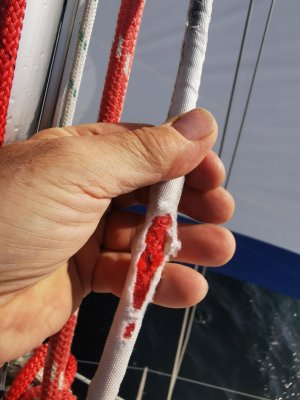Refueler
Well-Known Member
Replace the halyard, cut the damaged one where it is frayed and use the two remaining parts elsewhere, even if they are relegated to part-time mooring lines.
To cut corners trying to make do with faulty running rigging is inviting problems, usually when they are least needed.
Exactly ... replace and cut the old halyard into useable lines - such as mooring lines etc.

